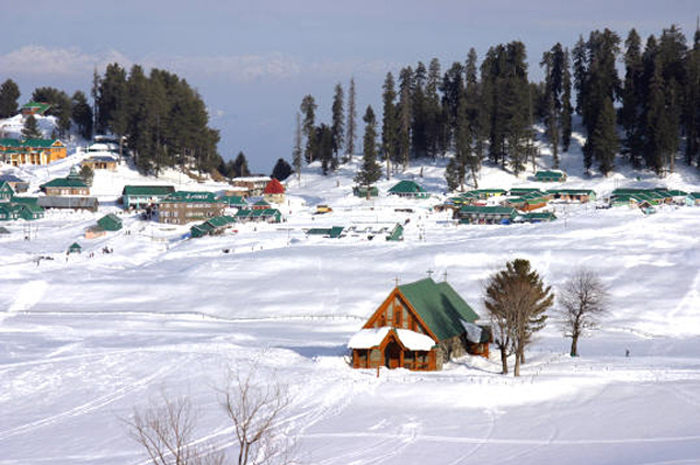Best of India Tours
- Golden Triangle Tour- Best of India & Nepal
- Classical Rajasthan
India Cultural Tours
- Images of North India- Karnataka Heritage
- Rajasthan & Goa Tour
Discover India Tours
- Grand India Tour- North to South India
- Central to South India
Rajasthan Tours
- Classical Rajasthan Tour- Golden Triangle Tour
- Grand Mughal Tour
India Luxury Trains
- Palace on Wheels- The Golden Chariot
- India Deccan Odyssey
- The Indian Maharaja
- Royal Rajasthan on Wheels
Nepal Tours
- Glimpses of Nepal- Buddhist Pilgrimage
- Nepal River Rafting
- Destinations of Nepal
- Nepal General Info
India Wildlife Tours
- North India Wild Life- South India Wildlife
Tibet Tours
- Tibet Monastery Tours- Explore Tibet
- Destinations of Tibet
Spa & Yoga Tours
- Ananda in Himalayas- Yoga & Meditation
Adventure Tours
- Manali Safari Tour- Himalayan Trekking
- Horse Safari
Jammu - Kashmir
Srinagar
![]() Gulmarg
Gulmarg
![]() Jammu
Jammu
![]() Pahalgam & Sonmarg
Pahalgam & Sonmarg

Jammu and Kashmir, India’s fascinating northernmost state consists of three regions differing in topography and culture. Jammu was the stronghold of Hindu Dogra kings and abounds with popular temples and secluded forest retreats. Jammu the whole city of is sprinkled with temples, so much so it is often called the city of temples. Kashmir is an emerald valley, cradled in the Himalayas, under crystalline blue skies, and against the backdrop of snow capped mountains. Kashmir’s capital city, Srinagar offers delightful holidays on the lakes with their shikaras and houseboats.
Ladakh is the northern most province of the state, with a highland desert lying between the Karakoram and the Himalayan ranges. It is now organized in to two districts: Leh and Kargil. Hilltop monasteries and a colorful way of life, completely at one with the surroundings, make Ladakh one of the best living traditions of Tibetan Buddhism in the world today.
Amongst the three regions of Jammu & Kashmir State, Jammu, perhaps, offers the widest diversity of terrain and beauty. The entire region is pocketed with lakes and valleys, some still little explored. The foundation of the settlement of Jammu is attributed to King Jambulochan of the 9th century BC. In 1730 AD, it came under the Dogra rule of Raja Dhruv Deva and Jammu became an important centre for arts and culture, now renowned as the Pahari School. The city also has some picturesque spots, in which Mansar is a beautiful lake fringed by the forest covered hills. Religion plays an important part as the whole city is sprinkled with temples.




